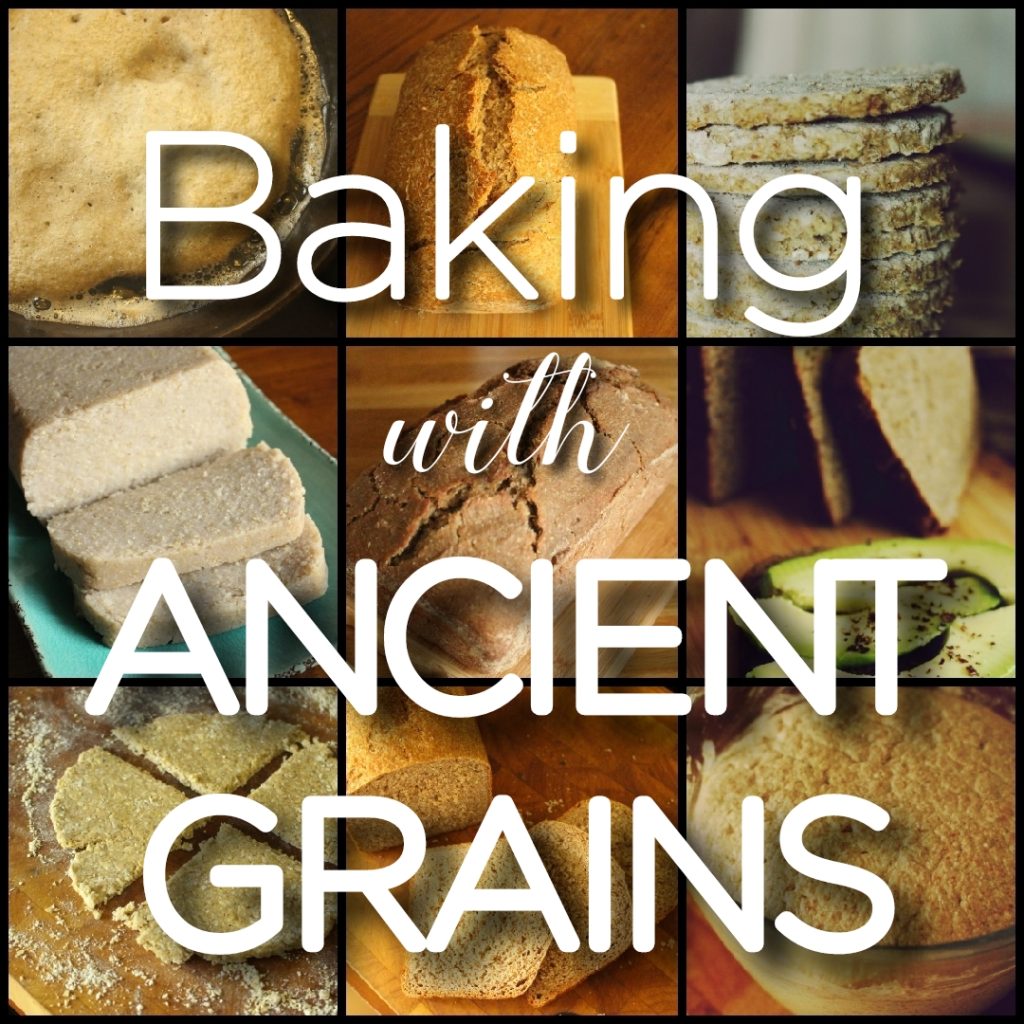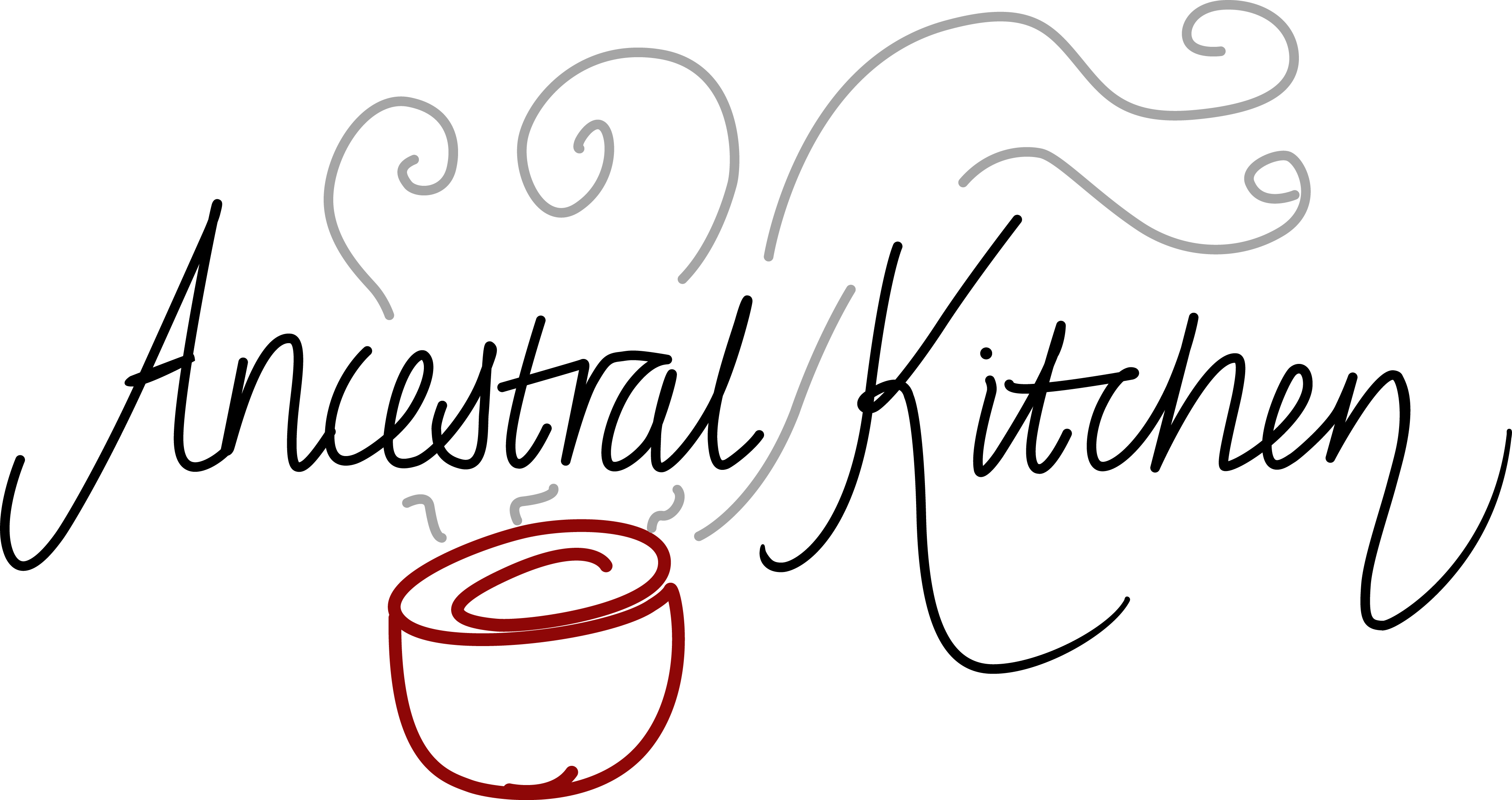If you’d have asked me this question 6 months ago, I’d have said a resounding, “Yes!”.
I have been a whole grain poster-girl for many years. In my early bread-making days, back when I used a machine and yeast, I’d always make dark, granary loaves. And when I decided to teach myself sourdough baking a few years back, there was no question of using white flour, I was going to perfect 100% whole grain loaves.

And that’s what I’ve shared as part of Ancestral Kitchen ever since. All the loaves that have come out of my ovens, been photographed for Instagram and been eaten with gusto have been completely whole grain. I’ve written a lot of these up, I love them so much.
Whole grains are healthy, right? Everyone knows that. The bran is full of fibre. People who eat them have lower outcomes of heart disease. They are slow-digesting so better for our blood sugar.
It seems like an open and shut case.
Until, that is, you dig a little bit deeper.
That’s what I’ve been doing the last 6 months, and my learnings have astounded me.

To answer this we first have to ask another question:
How do we know whether something is healthy?
A lot of the population listen to the advice of governments or marketing machines to answer this question. But in truth, health is far more complicated than a food pyramid. We need to look somewhere else.
I suggest the following:
- Ancestral Wisdom
- Science
- Our own bodies
Ancestral Wisdom:
Ferment it!
Our ancestors, who needed to survive in food conditions much harsher than the ones we live in, knew more about how to make foods beneficial to their bodies than our modern food chain does. Industrialisation has taken that wisdom out of the mainstream. But if we look we can still find and learn from it.
Traditional cultures take the time to ferment their grains. Sourdough bread has a long history in diverse parts of the world. And it’s not just in loaves where you see grain fermentation. The Mesoamerican’s ferment corn meal balls in leaves before reconstituting them with water to create a drink. In Africa, injera pancakes are created with five-day fermented teff grain.
Why do this extra processing when you don’t ‘need’ to? Who wants more work?!
It is done to transform grains into the most digestible, nutritious, food possible. These cultures knew, without science, that to create healthy grain products, fermentation was necessary.
From our ancestors, we can learn that fermentation of grains is vital for health. But this doesn’t help us answere the whole grain v. white flour question.
Conflicting Traditions
Beyond fermentation, ancestral grain usage gives us seemingly conflicting answers to our whole grain question.
For example, in Europe, we have, on one hand, the European elite prizing white bread and on the other, long whole grain baking traditions in Germany, Eastern Europe and Scandinavia. Both these have their own stories to tell.
And, as I’ve found in my research, there’s another interesting tradition that potentially holds wisdom:
Fermenting and then Removing the Bran
Much traditional grain processing involves removing bran from flour before baking and, instead of throwing it away, mining it for the probiotic potential it holds.
My favourite of these is Sowans, a traditional Scottish drink. This takes the husk and bran of freshly-milled oats and ferments it into a sour, tangy beverage. Before drinking, the concoction is strained and the bran fed to animals or ‘reused’ as a starter. In Romania, a similar fermented botanical liquid is made with corn and wheat bran.

Fermenting the bran makes sense to me, I know from my own baking that whole grains grow a stronger and more diverse bacterial starter than white flour.
But to throw it away? Really?! As a whole grain freak, it was the reading about this removal of bran that foxed me.
Then entered Dr Gundry and his book, The Plant Paradox.
Science:
I’m up for a 180-degree shift of my beliefs. I spent virtually all of the 1990s eating pretty-much zero saturated fat. Now I render lard and tallow and have them in constant supply in my kitchen. But still, as a long-time whole grain eater, this one felt like a slap around the face:
There are lectins in many grains. Lectins are proteins formed by the grains to protect themselves from being eaten by wildlife; to help them ensure that they’ll instead make more plants.
And lectins, found most densely in the bran of grains, are toxic to humans. They cause inflammation, which can lead to a whole host of health problems that vary in type and severity depending on the individual.
Our Own Bodies:
Feedback from our bodies is an important, and yet challenging, health marker to pursue.
I believe our ancestors knew more clearly when things caused them health problems. They weren’t swimming in a sea of food additives, pollution, blue light and chemicals. They could decipher what their bodies were saying more readily than we can.
And yet, we can. We can experiment, be slow, take notice and learn.
I’ve noticed a difference in my own body when I lighten my lectin load. I feel more clear-headed and less tired. For my son, the effect of removing lectin-containing foods has been a game-changer.
The way to imbibe less grain-based lectins is to make bread with lectin-free flours (I use millet and sorghum because they are grown in Italy), use less bran in grain products and choose long-fermentation with a sourdough culture.

You could obviously give one of the traditionally-fermented drinks, like the Scottish Sowans, a go in your kitchen too!
So, coming to the end of this article, I really want to be able to give you a simple, clear answer the question, Are Whole Grains Healthy?
But I can’t.
Because the answer is nuanced.
What I can say though, is don’t be fooled: Whole grains aren’t the holy grail of healthy, fibrous, eating. In fact, unwisely prepared, they could be the cause of much ill-health.
Let’s learn from the wisdom of those who came before us; add that to the scientific awareness that’s available to us now and use our own bodies to determine what’s right for each of us.

Bring ancient grain baking into your kitchen!
Download my free 30-page guide with five healthy and tasty 100% ancient grains recipes.


amazing article thank you!
Thank you, Marlo!
Great article! The answer is in trying and doing what you do! Thank you. You are becoming my favourite writer!!
Hi Millie! Thank you so much for commenting. I love to write and want to do it more, so to hear you enjoy my output warms my heart 🙂
Hi Ali,
Thanks a lot for sharing the wisdom. I would just like to put it out there that although millet is free from lectins, it contains phytic acid, which can also be a problem for some people. But with the right preparation, millet can be a very good alternative.
Thanks Sarah. And yes to both of your points!